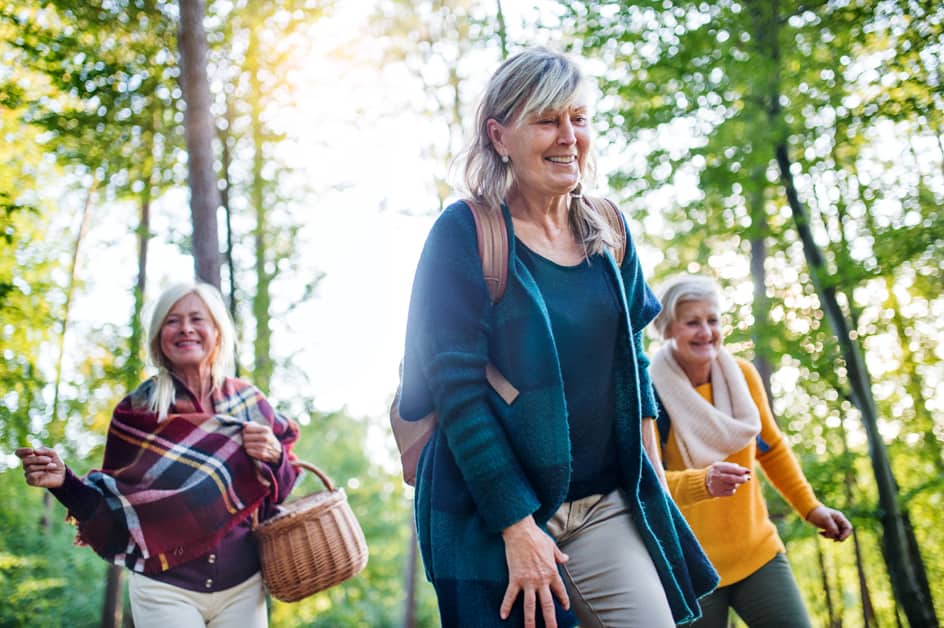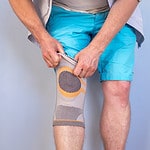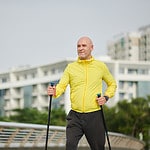Introduction
Walking is an awesome exercise. But, knee pain can make it hard to stay active. Good news! There are methods to help. They involve changing your gait, modifying your steps, and taking preventive measures. Such as wearing the right shoes, and doing exercises.
This article discusses the five top walking techniques for relieving knee pain. We’ll give you tips on improving your gait, and exercises to reduce pain. With these methods, you can stay active with minimal discomfort. So, it’s easier to do daily activities and stay fit!
Proper Posture
Good posture is a must when walking with knee pain. It reduces tension on the joint and lowers the risk of injury. For proper posture, keep your spine even, shoulders relaxed, and stride even.
Let’s figure out how to develop the correct posture to relieve knee pain:
Maintain an upright posture
Upright posture is essential for your health. It can reduce back and neck pain, prevent fatigue and stiffness, decrease pressure on joints and ligaments, and improve circulation and breathing. It also increases mental clarity and focus.
When seated, ensure both feet are flat on the ground, with shoulders relaxed and arms uncrossed. When standing, keep knees slightly bent, with weight distributed over both feet. Adjust your stance often, such as shifting from side to side or back and forth.
Using ergonomic objects like adjustable chairs and desks can help too. Good posture requires effort, but it helps you carry yourself with confidence. Take breaks throughout the day and listen to your body’s cues. This will help you maintain a healthy lifestyle, and benefit from it.
Keep your head up
When walking, it’s important to keep your head up. Lean forward too much, and you’ll feel tension in your back, shoulders and neck. To stay upright, focus on keeping your chin parallel to the ground. Use cues to remind yourself like counting steps or imagining a string from the top of your head being pulled up. This stretches your spine and keeps good posture. Relax your muscles, too. Otherwise, you could worsen any existing pain or discomfort.
Also, make sure you’re walking at the right pace for you. That way, you can relieve knee pain while also staying active.
Engage your core muscles
Strengthening your core muscles is essential for posture, health and avoiding back pain. Stand with your feet shoulder-width apart and your arms by your sides. Pull in on the center of your body, squeezing under your navel. Activate the four core abdominal muscles: transversus abdominis, rectus abdominis, internal obliques, and external obliques. You will feel a tightening around this area.
Engaging these core muscles is key for maintaining proper posture and improving stability. Pay attention to how your body feels. If it gets uncomfortable, stretch after engaging each muscle. Do exercises to further help strengthen these core muscles such as:
- Planks
- Bridges
- Yoga poses
This will build abdominal strength and stability for better posture!
Foot Placement
Knee pain relief? Yes please! Foot placement can help. It’s important to position your feet the right way so that your knees don’t get too stressed. This can help reduce the pain. So, what are the best techniques? Here are some ideas:
- Position your feet so that they are slightly wider than shoulder-width apart.
- Keep your feet flat on the ground and point them slightly outward.
- Make sure your toes point straight ahead.
- Engage your core and glutes to help take the pressure off your knees.
- Focus on keeping your knees in line with your feet.
Place your feet slightly wider than shoulder-width apart
Set your feet wider than shoulder-width apart. This will give you a strong base to start from. Keep your toes pointing forward/slightly outward and both heels on the ground. When you lower yourself, take your knee to 90 degrees. Then move back up to a straight leg.
If wide-stance squats hurt/aggravate an injury, switch to a narrower stance. This will help with proper form during each rep.
Point your toes slightly outward
For a balanced and easy golf swing, your feet must be in the right position. Point your toes slightly outwards and make them parallel with each other. Place 70% of your weight on your left foot (for right-handed golfers) and 30% on the right. Also, move most of your weight to the inside of your feet. This ensures your swing is free and allows you to hit with power and control.
To practice balance, try the static postural drill: face forward, pause for a few seconds, then start the backswing. This helps put balance into your muscle memory, allowing for more consistent shots around the course.
Avoid over-striding
Avoiding over-striding is key to proper knee alignment and minimizing pain. Over-striding is when you take steps that are too long, or your heel strikes the ground before your whole foot. This causes extra stress on the knees, leading to discomfort and instability.
Focus on shorter strides and place your feet flat on the ground before taking a step. This should be effortless, repeatable with no fatigue or extra pressure. Additionally, running with proper form and keeping a consistent pace will help reduce over-striding. Lastly, regular stretching can help improve flexibility in the muscles surrounding your knees, helping them stay strong.
Arm Swing
Arm swing: a popular walking technique for knee pain relief! Swing your arms from side to side as you walk briskly. It gives support to your leg joints and strengthens the muscles around your knees. Plus, it can increase blood circulation, helping to reduce stiffness.
Let’s explore the details and benefits of this technique!
Swing your arms in sync with your legs
Swing your arms in sync with your legs for improved walking form. Keep one arm moving in a forward-backward motion in rhythm with the opposite leg. This helps you stay straight and relaxes your shoulders and upper back.
Reduce pain in the lower body by aiming to move your elbows up to shoulder height for each step. Make the motion natural – subtle at first, more pronounced as you practice. Swinging your arms in tandem with your legs promotes a steady walking rhythm. This helps keep you efficient and conserve energy, and minimizes exhaustion during intense or long-term activities.
Keep your arms close to your body
When you walk and your knees hurt, keep your arms close. Swinging them too much puts strain on your knees. Keep your arms in a natural, relaxed swing near your sides – not in front or back. This will reduce pressure on the knee and help you walk or run with good posture.
Gait
Gait is our walking style. It’s really important for managing knee pain. We have 3 techniques we can use: heel-toe, roll-over-toe, and toe-heel walking. Knowing which one works best for us is key to easing knee pain.
Let’s look at the top gait methods for reducing knee discomfort:
Walk heel to toe
Heel-to-toe walking is often suggested by physical therapists, trainers, and doctors. It helps reduce pain and stops injury for people with knee issues.
You must evenly spread the weight across your whole leg when it touches the ground. This reduces pressure on the knee.
When walking heel-to-toe, make sure your feet face forward. Don’t angle your toes outward. This stops one side of the knee from getting extra strain.
Keep your head up, chest outward, back straight and abdominals tight while walking. This helps with posture and stops strain on the knees.
To practice heel-to-toe, stand tall with a straight back and pulled-in stomach.
- With each step, consciously land with your heel first, then your toes.
- Roll through each step from front to back, not side-to-side.
- Repeat this pattern when standing or walking. With practice this will become second nature!
Push off with your toes
Proper walking gait is key to reducing knee pain. Your weight should be spread out evenly across your body. When you walk, keep your feet pointing slightly outward. Most of your bodyweight should be on your back foot’s heel, then push off with the toes of your front foot.
Try to make a smooth rolling motion from heel to toe. This will help power lifters too, by not stressing their knees too much.
The gait strengthens and tones leg muscles. It also aids posture, as it encourages correct hip alignment – not pushing them forward – and transfers weight smoothly.
Avoid excessive heel-striking
Heel-striking is a problem for runners. It can hurt performance and cause injuries. The aim should be to land on the forefoot or midfoot instead of the heel. This can happen when you lean too far forward and it throws you off balance. This brings your body closer to a strolling gait than to a running one. This transfers more force to your heels when you hit the ground.
To stop this, make sure you have proper posture and balance while running. This should make it feel light and responsive instead of hitting the ground with force. Upright is best when running faster. That helps keep your body from leaning too far and ending up in a heel-striking position.
Practicing
- midfoot takeoff (both feet off the ground)
- and landing just behind the midfoot (closer to the front of your shoe)
will help speed and form.
Conclusion
Body mechanics are key when crafting a walking technique to reduce knee pain. Wear proper shoes, monitor tempo and distance, keep your posture good, ensure hips stay aligned during the gait cycle, and rely on good core and hip strength. Also, don’t forget to stretch regularly!
If the pain lasts more than two days or is intense, seek medical advice. Finally, warm up and cool down before and after any physical activity. This increases range of motion and decreases joint stress and swelling.
Frequently Asked Questions





